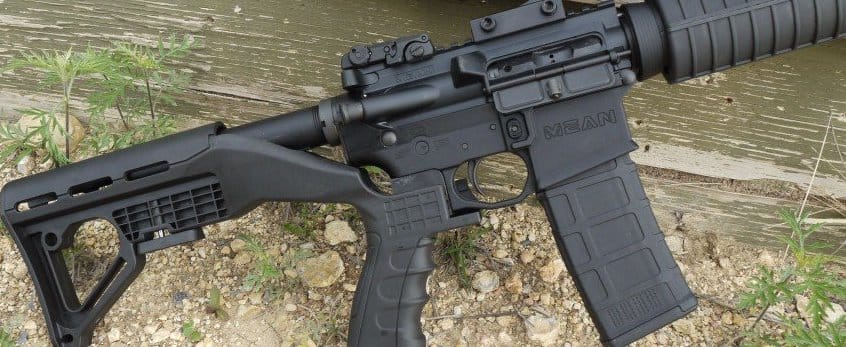MEDIA REQUESTS
Our experts can speak to the full spectrum of gun violence prevention issues. Have a question? Email us at media@giffords.org.
Contact
Bump stocks are designed to circumvent laws restricting automatic weapons, allowing rifles to fire in quick succession, killing more people more efficiently.
Used in the 1 October Shooting in Las Vegas at the Route 91 Harvest Music Festival—the deadliest mass shooting in modern American history—bump stocks increase the rate of fire of semiautomatic weapons, allowing them to approach the rate of automatic firearms.
Our experts can speak to the full spectrum of gun violence prevention issues. Have a question? Email us at media@giffords.org.
Contact
A bump stock replaces a standard shoulder stock on a semiautomatic rifle, allowing the weapon to slide back and forth with the recoil of each shot fired. This makes the rifle less accurate, but allows a person to hold a finger steady while the recoil “bumps” the gun against the shooter’s finger, causing the trigger to be activated.
By harnessing the weapon’s recoil or kickback, the bump stock causes the rifle to fire automatically, using the energy released by the prior shot fired to cause the rifle to fire again without the shooter needing to continually pull the trigger. The firing rate increases dramatically, equaling the rates of a traditional machine gun.
The Las Vegas shooter used bump stocks to convert 14 semi-automatic rifles into automatic weapons that could be fired indiscriminately, and very rapidly, into a crowd, firing more than 1000 bullets, killing 60 people, and injuring nearly 500 others.
After the Las Vegas shooting and the prominent role bump stocks played in it, the ATF issued a rule categorizing bump stocks as machine guns under the federal Gun Control Act and National Firearms Act. This rule effectively banned bump stocks in all 50 states.
The gun lobby challenged ATF’s bump stock rule, bringing the case all the way to the Supreme Court. However, in Garland v. Cargill, the Court overturned this rule, creating a serious public safety concern and allow America’s gun violence problem to become even more deadly.
Giffords Law Center to Prevent Gun Violence urged the Supreme Court to uphold the ATF rule limiting bump stocks from civilian ownership and filed an amicus brief in the case.
Seventeen states and the District of Columbia have banned bump stocks. While each state defines these devices differently, they all recognize the danger these devices pose to public safety, and that they have no place in civilian hands.
Currently bump stocks are banned in:

Every year, the data is clear: States with strong gun laws have less gun violence. See how your state compares in our annual ranking.
Read More
We’re building a movement of Americans committed to gun safety. Democrats and Republicans, gun owners and non–gun owners alike—we stand united to reject the gun lobby and pass lifesaving gun safety laws.